A pair of Chinese export porcelain shell shaped dishes. Kangxi period
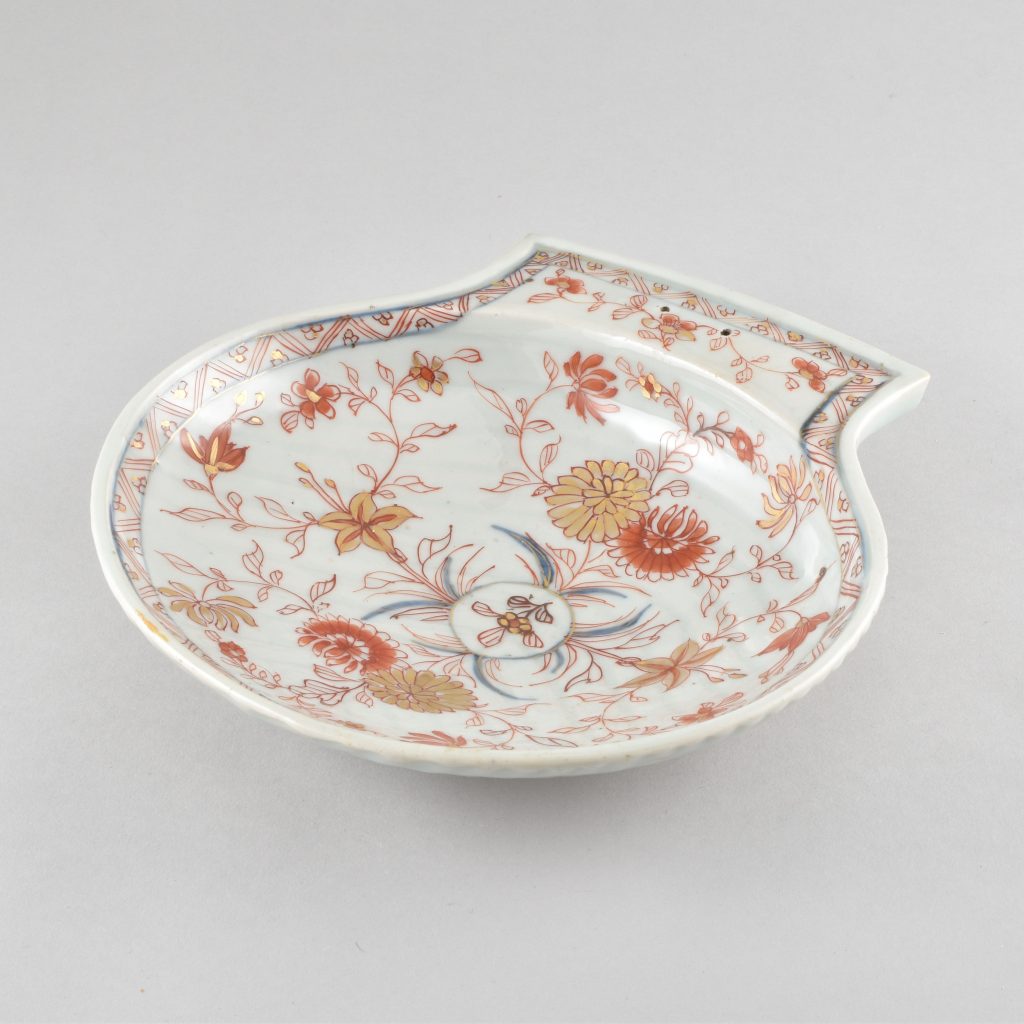
The shell-dishes lightly moulded and finely enamelled in the traditional imari palette with sprays of flowers.
A pair of large Chinese imari dishes depicting a scene from The Romance of the Western Chamber. Yongzheng period.
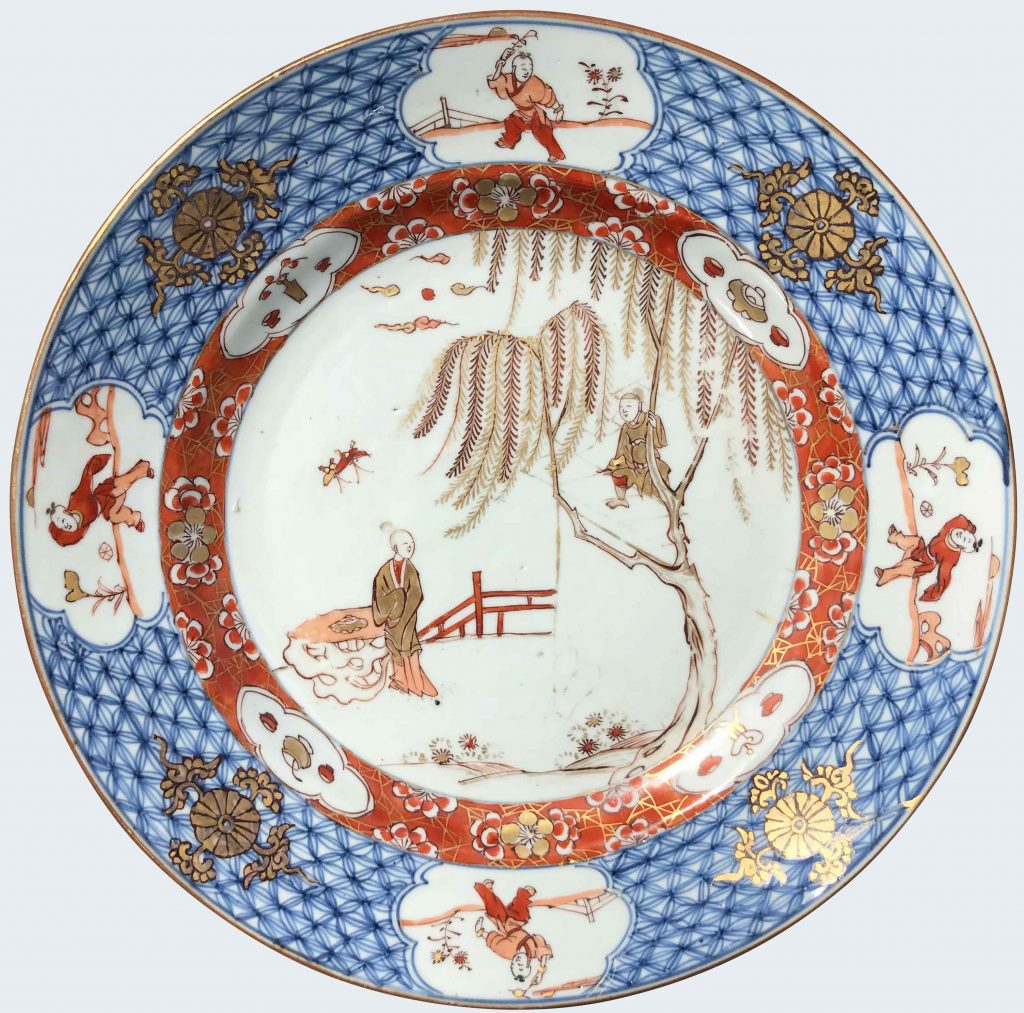
Decorated in the traditional imari palette, with a scene from Act III of The Romance of the Western Chamber (Xi Xiang Ji) by the Yuan Dynasty playwright Wang Shifu (c.1260-1336), with Cui Yingying awaiting the arrival of Zhang Sheng. On the rim, a blue treillis and four reserves with Chinese boys.
A pair of large famille verte-imari dishes decorated with a scroll. Kangxi/Yongzheng period
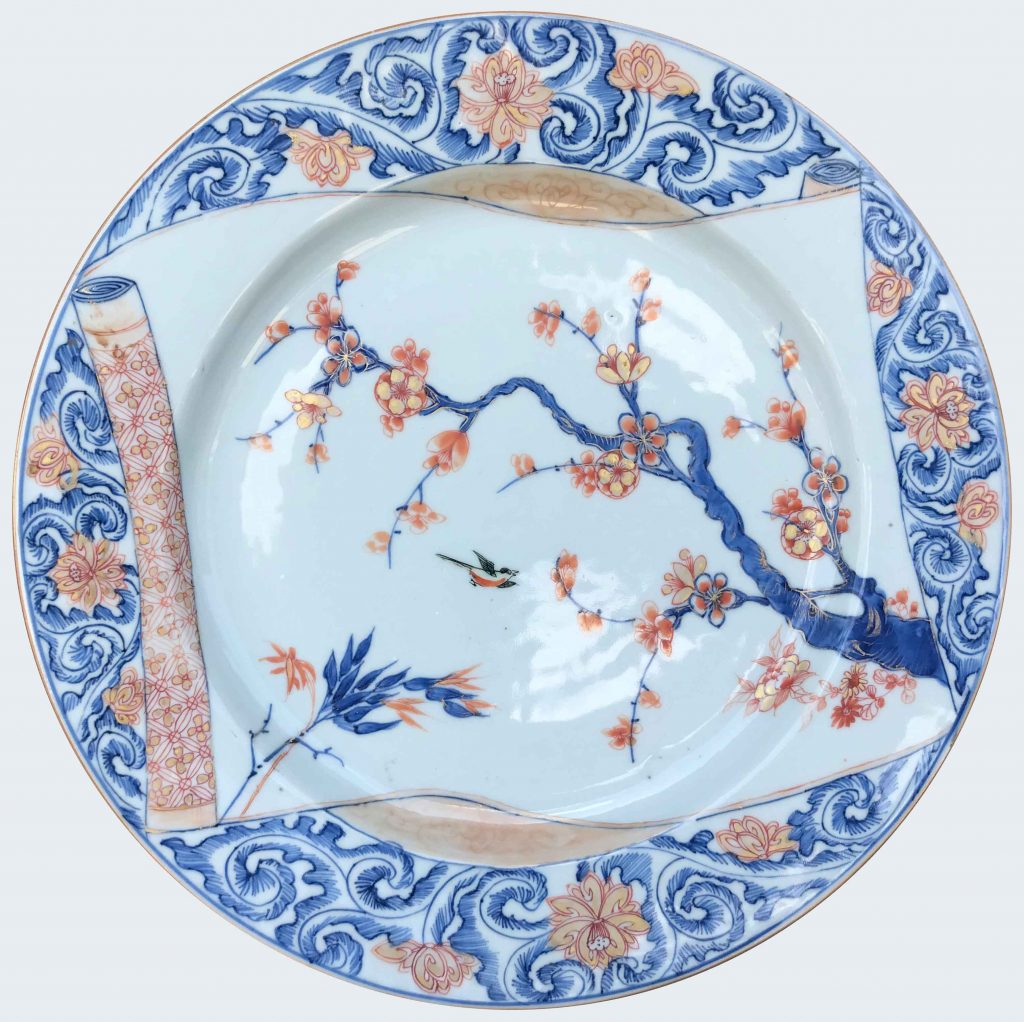
Decorated in underglaze blue, iron-red, green, black, and gold with a border of chrysanthemum blossoms amongst stylized branches framing a half-open scroll, central scene of a bird flying near a prunus branch opposite a cluster of bamboo.
A pair of imari dishes decorated with Hsi Wang Mu, Queen Mother of the West. Kangxi period.
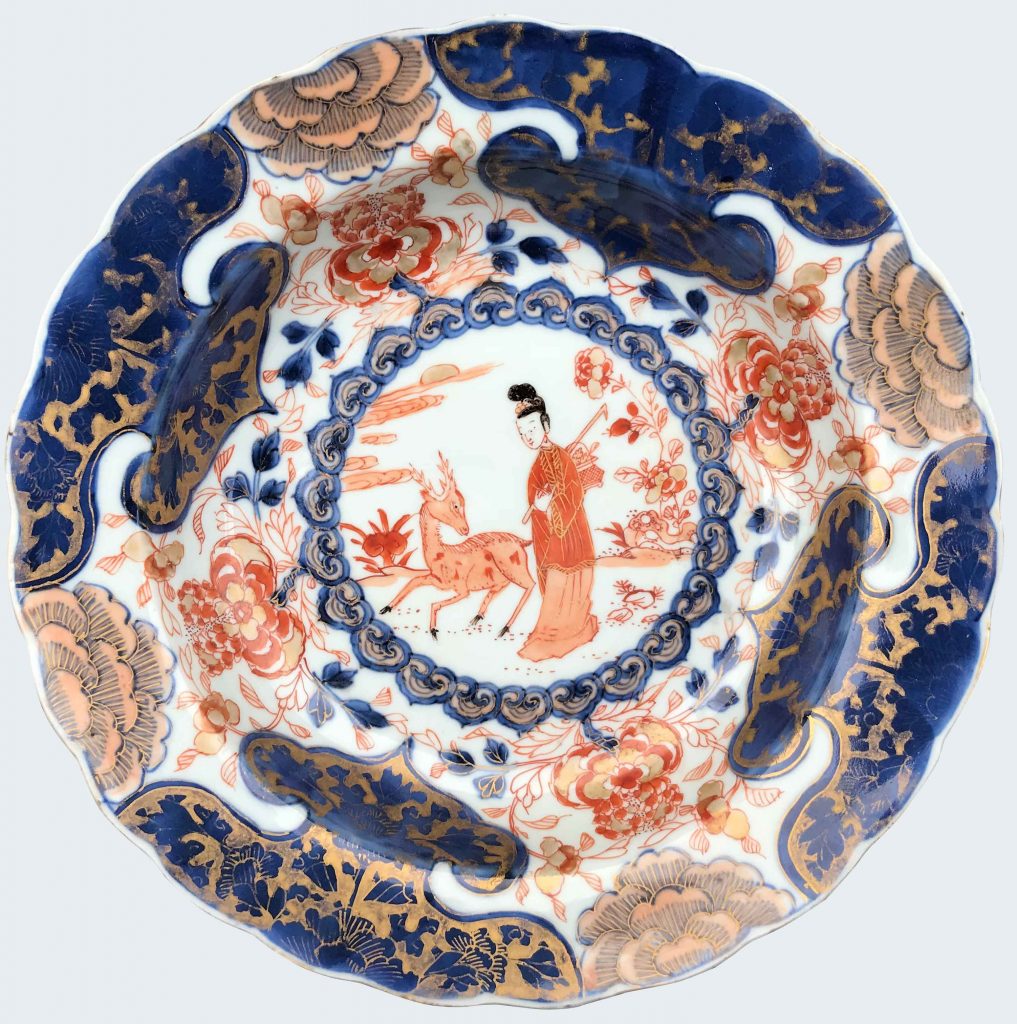
Decorated with a lady walking in a garden with a deer, Hsi Wang Mu, within large lappet borders.
A pair of Chinese Imari “La dame au parasol” plates after a design of Pronk. Qianlong period.
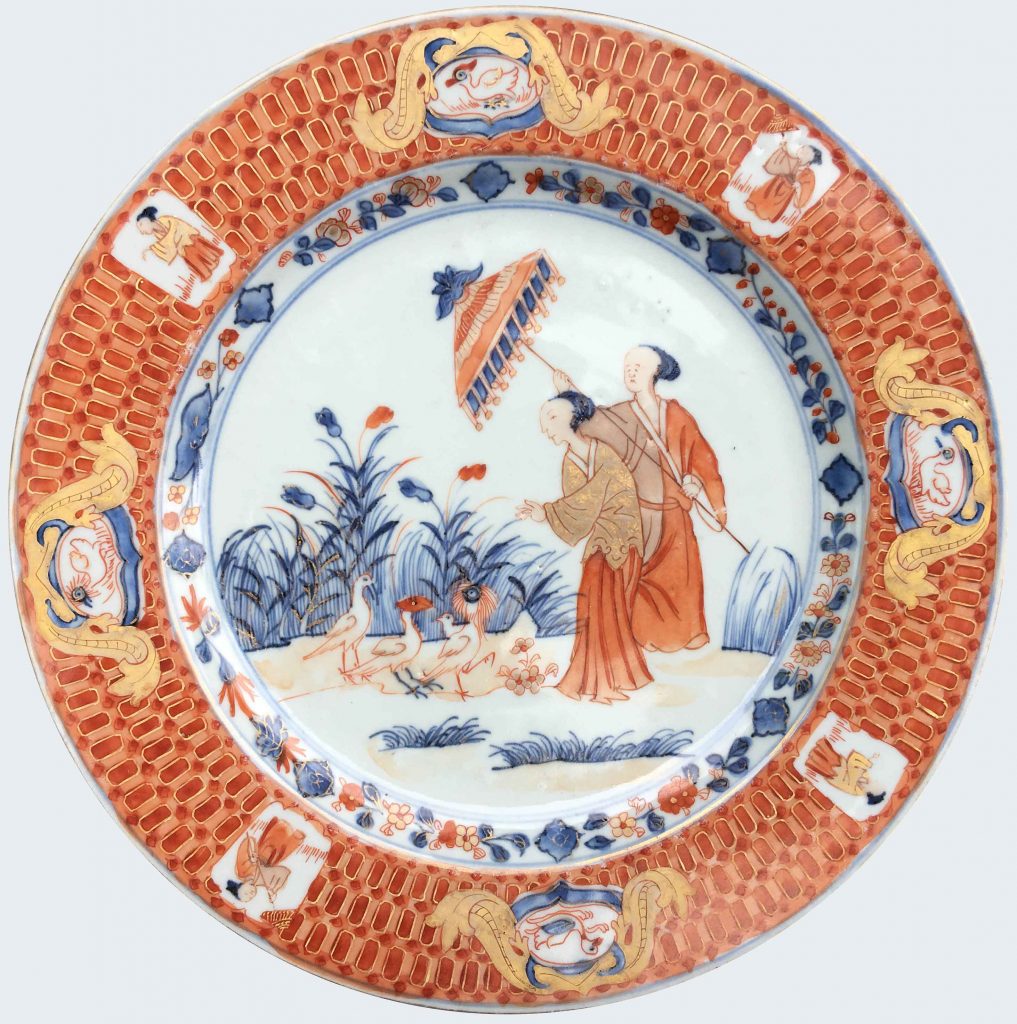
Decorated in underglaze-blue, iron-red and gilt with ‘La Dame au Parasol’ after a design by Cornelis Pronk, the central scene with a lady holding a parasol above another woman standing near waterfowl on a grassy bank, within a narrow band of flower-sprays at the well, the border with figural and bird cartouches on a honey-comb […]
A Japanese double walled baluster vase. Edo period, circa 1700
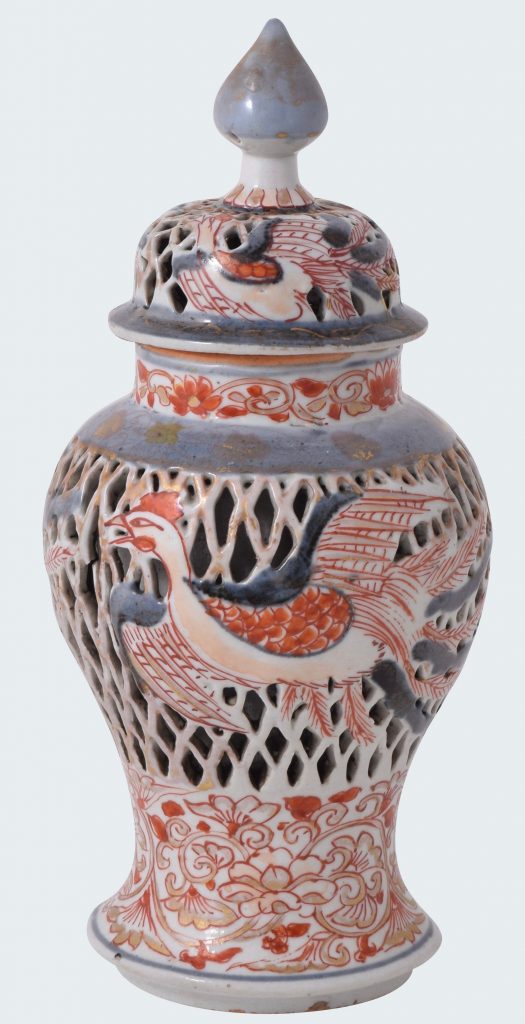
Decorated with a double wall, and painted in the traditional imari palette, with a phoenix and flowers.
A Chinese imari set of 3 plates decorated with a kilin. Kangxi period.
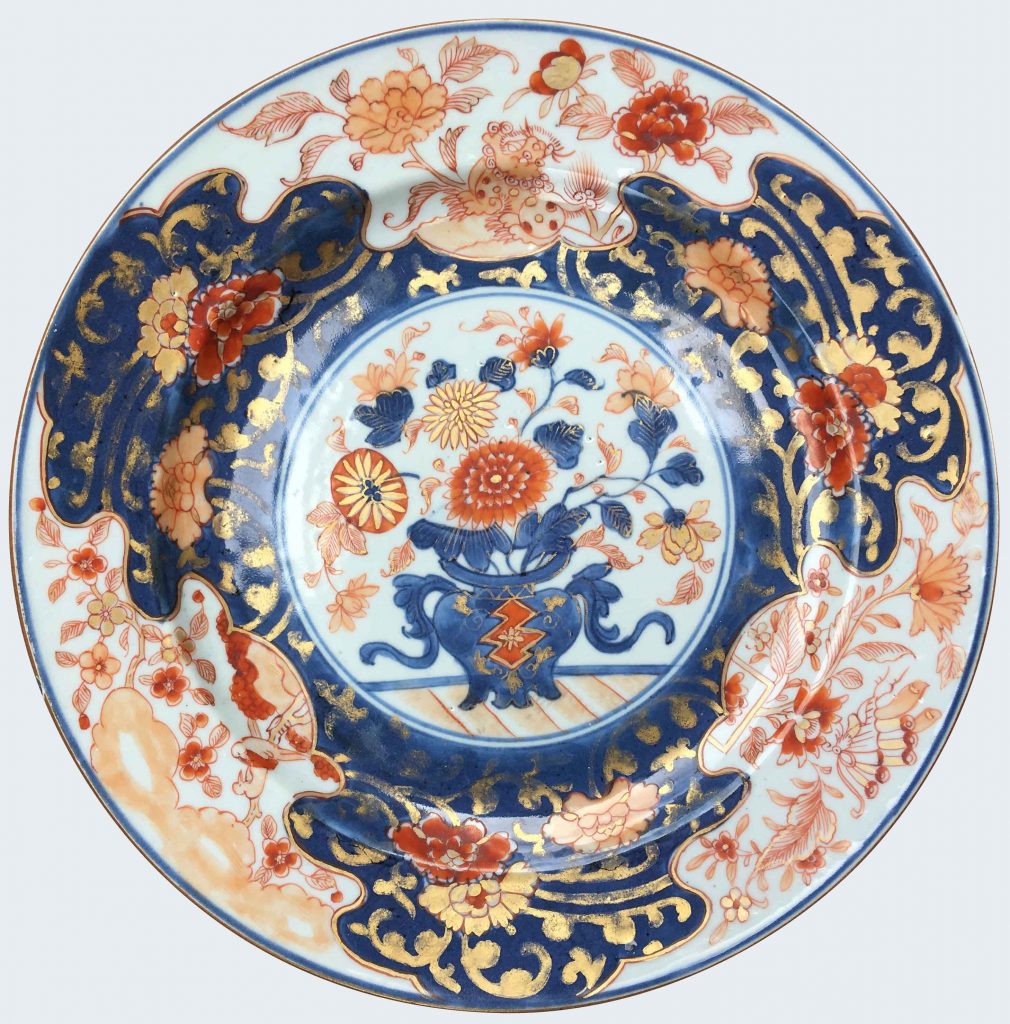
Decorated in the centre with flowers issuing from a jardinière, the border with three shaped vignettes containing a mythical beast and branches of peony, a pair of birds on flowering branches, and an insect flying amongst branches of chrysanthemum
A Chinese imari barber bowl. Kangxi period.
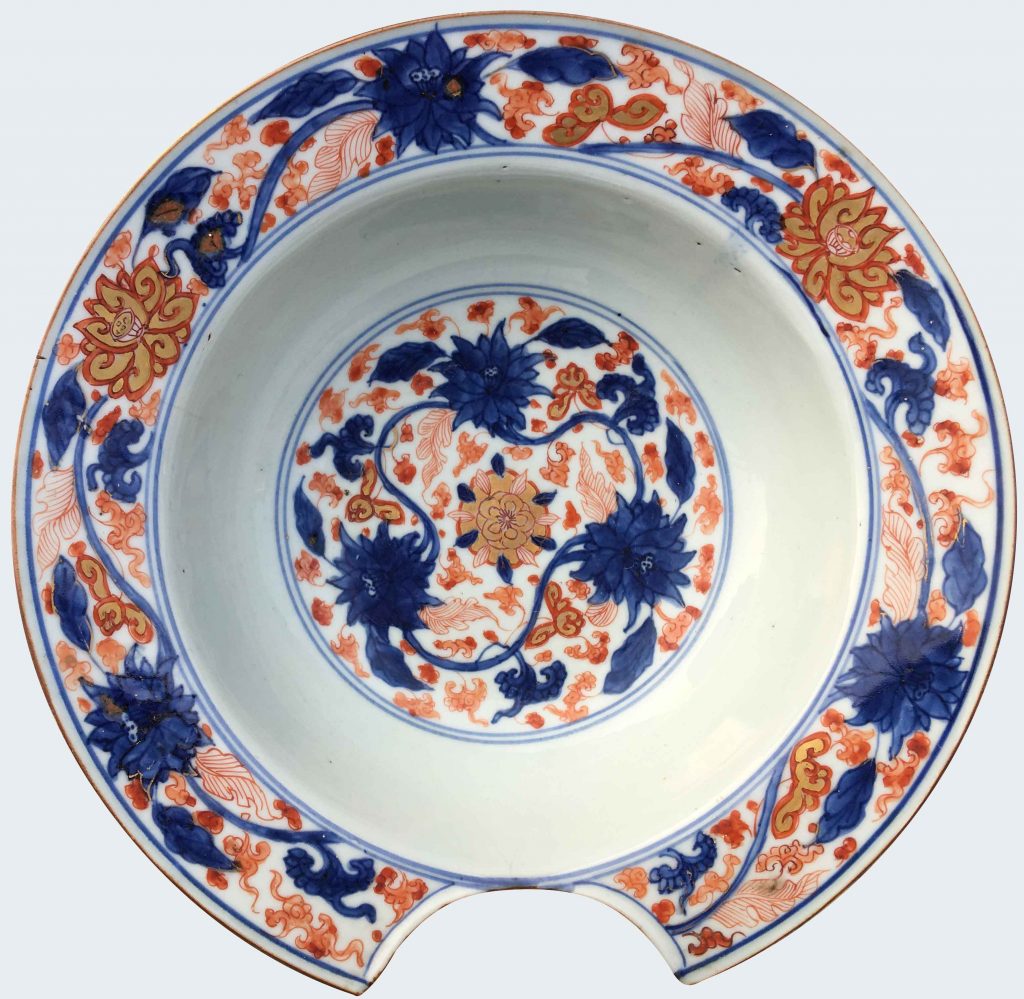
Decorated in the imari palette, with chrysanthemum.
A Chinese imari écuelle à bouillon. Kangxi period.
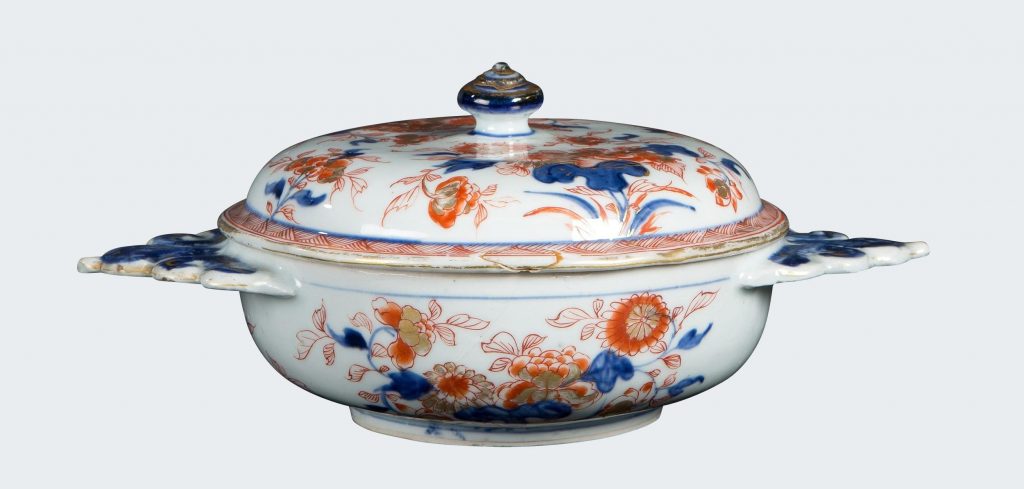
Decorated in the imari palette, the circular bowl applied with two flat foliate flange handles at the rim, the exterior enameled with flowers, the shallow domed cover similarly enameled around the floral finial.
A Chinese Imari plate decorated with crabs. Kangxi period.
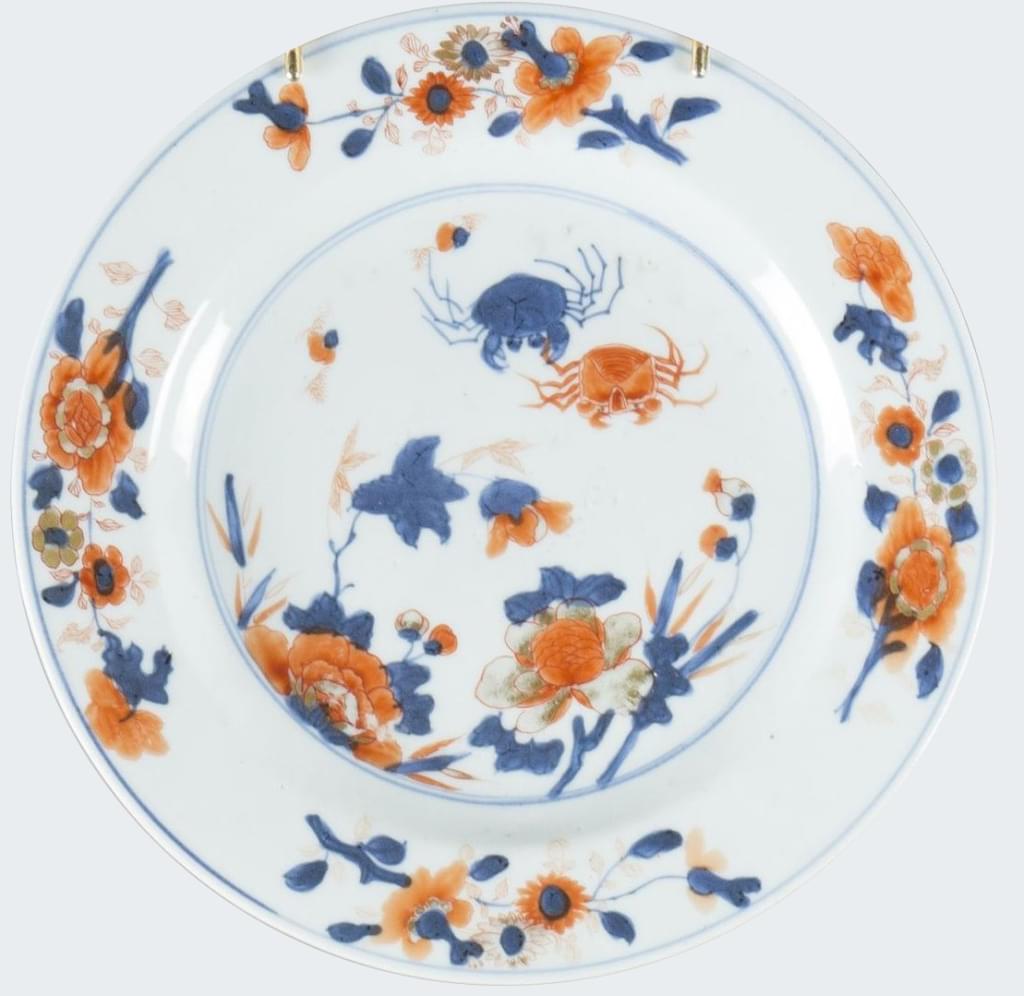
Painted in the traditional Imari palette and decorated with crabs and flowers.